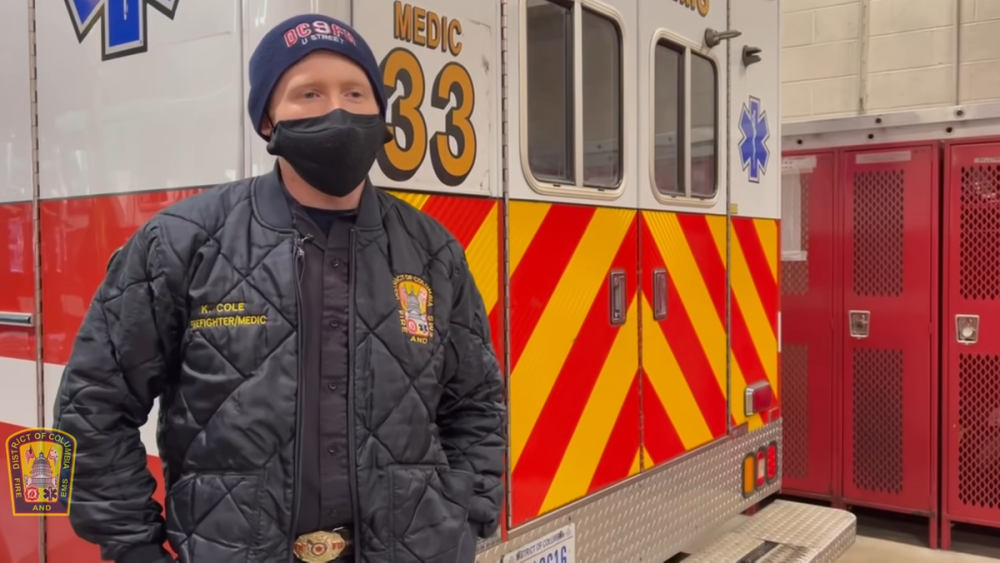A must-watch DC Fire & EMS Department video recounts the chaotic scene encountered by department personnel when responding to the insurrection at the U.S. Capitol building on Jan. 6, 2021.
Through first-person accounts, chief officers, firefighters, EMTs and paramedics detail their efforts to provide emergency medical care amid the violence. The video, published on YouTube, also documents the medical treatment of the five individuals who died during the incident, including U.S. Capitol Police Officer Brian Sicknick.
Watch: Jan. 6, 2021: Events at the U.S. Capitol, as told by DC FEMS
Produced by the DC Fire & EMS Department, the video walks chronologically through the incident, as told by the personnel who were there. The video’s explanation of a preplanned response for demonstrators, not too different from mass gathering events that commonly happen on the National Mall, to an out-of-control insurrection is captivating to watch. The producers use the narration of the fire and EMS personnel, along with news and social media footage, to put viewers into the scene.
Training activity
This documentary-style video is an incredible training opportunity for every firefighter, EMT, paramedic and student. As you watch, you’ll learn how:
-
Incident management and incident command principles were put into action
-
Commanders adapted to the changing conditions on the ground
-
Rescuers were able to reach and extricate victims
-
Calm and clear communications guided personnel in and out of the chaotic incident
Remember, nearly every jurisdiction has government buildings, from courthouses to statehouses, that can be and often are the targets of protestors. Securing those buildings might be the job of law enforcement, but fire and EMS personnel, just like you, are responsible for the conservation of life and property.
Don’t just take my word for it on the significance of this video. Here’s how Chief Billy Goldfeder described the video to recipients of The Secret List: “This outstanding film will take you through a timeline of events on Jan. 6, 2021, as DC Fire & EMS personnel treated and transported hundreds of patients in the midst of hostile crowds. DC’s Bravest worked alongside both Metropolitan Police and U.S. Capitol Police, treating more than 50 injured officers. This video is excellent for every FIRE OFFICER from a command, control, accountability learning standpoint.”
Learn, prepare and adjust
I applaud DC Fire & EMS for sharing with all departments, as well as the public, their role in caring for the ill and injured on Jan. 6, 2021. This type of after-action review is an opportunity for all of us to learn, imagine how we might respond to similar political protests that turn violent in our community, and adjust our response plans accordingly. Here are my four top takeaways:
- Relationships are critical to effective major incident response. In the video you’ll hear about personnel, not working their usual assignment, who became division commanders or part of patient care teams.
- Practice and experience matter. When facing an “unimaginable” event responders will default to their training and follow what they know.
- Anyone can be the incident commander. In a dynamic incident all personnel need to have the ability to lead, even if it is just long enough to initiate incident command before briefing the first-arriving chief officer.
- Adapt rescue efforts to the environment and resources at hand. Several of the patients were accessed with EMS reconnaissance teams, which were lightly equipped units of two or three EMS personnel.
What are your top takeaways? How will you use this video for training?













